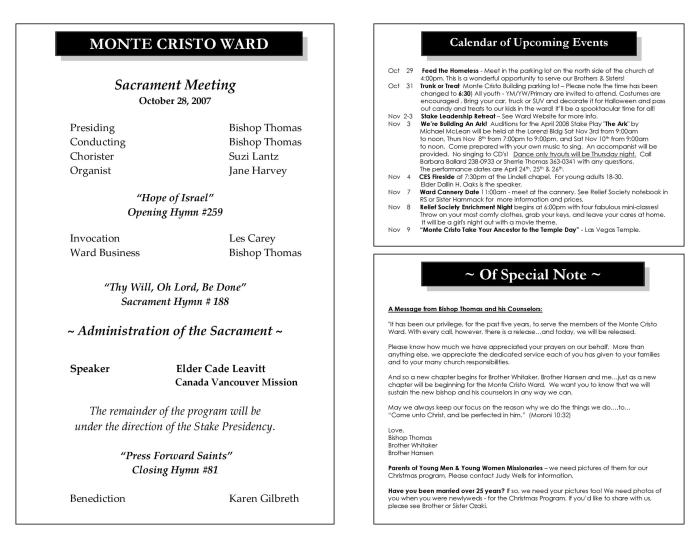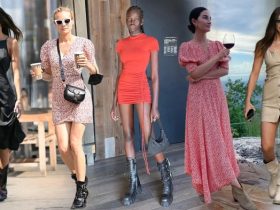Content Organization and Structure

Contoh desain buletin siap diedit – Crafting a compelling newsletter requires more than just captivating content; it demands a meticulous orchestration of information, a symphony of visual elements working in perfect harmony to guide the reader’s eye and captivate their attention. The strategic arrangement of elements is paramount to achieving impactful communication.
Effective newsletter design is a delicate balance between form and function. It’s about leading the reader on a journey, revealing information in a logical and engaging sequence, ultimately driving them towards a desired action. This section delves into the crucial aspects of content organization, visual hierarchy, and the strategic placement of calls-to-action.
Content Hierarchy Using Bulleted Lists
A well-structured newsletter presents information in a clear, hierarchical manner. This ensures readability and allows readers to quickly grasp the key takeaways. Using bulleted lists is a powerful tool to achieve this. The following example demonstrates a typical hierarchy, progressing from broad topics to specific details:
- Headline: Announcing the Launch of Our Revolutionary New Product!
- Sub-headline: Introducing the “Nova” – Redefining Efficiency and Innovation.
- Key Features:
- Unprecedented Speed and Performance
- Intuitive User Interface
- Seamless Integration with Existing Systems
- Benefits:
- Increased Productivity
- Reduced Operational Costs
- Enhanced Customer Satisfaction
- Call to Action: Learn More and Order Yours Today!
Effective Calls-to-Action
Calls-to-action (CTAs) are the lifeblood of any successful newsletter. They are the pivotal moment where passive reading transforms into active engagement. These are not mere suggestions; they are strategically placed commands designed to elicit a specific response.
- Direct and Action-Oriented: “Shop Now,” “Download Your Free Guide,” “Register Today.”
- Benefit-Driven: “Unlock Your Potential,” “Save Time and Money,” “Experience the Difference.”
- Sense of Urgency: “Limited-Time Offer,” “Sale Ends Soon,” “Don’t Miss Out.”
- Visually Prominent: CTAs should stand out through contrasting colors, bold fonts, and strategic placement.
Visual Hierarchy in Newsletter Design
Visual hierarchy guides the reader’s eye through the newsletter, emphasizing crucial information and creating a clear path of understanding. It’s about controlling the visual weight of elements to direct attention strategically. This is achieved through the skillful use of size, color, contrast, and whitespace.
The most important information should be the largest and most prominent. Secondary information should be smaller and less visually dominant.
Color contrast is crucial. Use color to highlight key elements and create visual separation between sections.
Whitespace is not empty space; it’s a powerful design element that improves readability and visual appeal.
Sample Newsletter Layout and Design Choices
Imagine a newsletter with a clean, modern aesthetic. The top third features a captivating hero image—perhaps a close-up shot of a person using the “Nova” product, radiating excitement and efficiency. Below this, a clear, concise headline announces the product launch. Sub-headlines provide further details, leading the reader into the body of the newsletter.
The body text is broken into digestible chunks, using bullet points and short paragraphs to enhance readability. High-quality images are strategically interspersed to break up the text and add visual interest. Each section is separated by generous amounts of whitespace, preventing the newsletter from feeling cluttered. The CTA, a vibrant button reading “Order Now,” is prominently placed near the bottom, concluding the reader’s journey with a clear next step.
The color palette is muted and sophisticated, using a primary color to highlight key elements and CTAs. The overall layout is balanced, with elements distributed evenly across the page, creating a sense of harmony and visual appeal.
Image and Visual Considerations
Behold! The visual realm, a potent force in the captivating art of newsletter design. Images, if wielded correctly, are not mere adornments, but rather the very lifeblood that courses through the veins of engagement, transforming passive readers into active participants. Their strategic deployment is paramount, a dance between aesthetics and efficacy.
Ideal Image Resolution and File Formats
High-resolution images are the cornerstone of a visually stunning newsletter. Think of them as the brushstrokes of a masterpiece, each pixel contributing to the overall impact. For optimal clarity on various devices, aim for a minimum resolution of 72 DPI (dots per inch) for web use, but ideally, start with much higher resolution images (at least 300 DPI) to allow for resizing without compromising quality.
As for file formats, JPEG is generally preferred for photographic images due to its excellent compression, striking a balance between file size and image quality. PNG, on the other hand, excels with graphics containing sharp lines and transparent backgrounds, preserving crisp details that JPEG might soften. Avoid using GIF unless animation is specifically required, as they often lack the color depth and sharpness of JPEG and PNG.
Appropriate Use of Images Within a Newsletter Design
Images are not merely decorative; they are strategic elements that guide the reader’s eye and enhance understanding. Consider these placements:
Hero Image: Dominating the top of the newsletter, a captivating hero image instantly sets the tone and grabs attention. Imagine a vibrant photo of a smiling family enjoying a picnic for a family-oriented newsletter, or a sleek, modern cityscape for a newsletter targeting young professionals. This impactful visual immediately establishes the newsletter’s theme and entices further exploration.
Inline Images: Strategically placed within the text, these smaller images break up large blocks of text, preventing reader fatigue and adding visual interest. Think of these as visual punctuation, reinforcing key points or adding a touch of personality to the content. For instance, a small image of a product alongside its description can significantly boost engagement.
Background Images: Subtly enhancing the overall aesthetic, a background image sets the mood and provides a visually appealing backdrop for the text. This technique requires careful consideration of color contrast and image opacity to ensure text readability remains paramount. A soft, textured background could enhance a newsletter aimed at senior citizens, creating a sense of calm and sophistication.
Optimizing Images for Web Use, Contoh desain buletin siap diedit
The digital realm demands efficiency. Large image files significantly slow down loading times, leading to frustrated readers who quickly abandon your newsletter. Optimization is crucial. Employ image compression tools to reduce file sizes without sacrificing significant visual quality. Consider using tools that allow for lossy compression (JPEG) for photos and lossless compression (PNG) for graphics.
Always aim for a balance between image quality and file size; a slight reduction in quality is often a worthwhile trade-off for significantly faster loading times. Furthermore, resizing images to the exact dimensions needed within the newsletter design prevents unnecessary data transfer and enhances loading speed. Think of it as tailoring a suit – precision ensures elegance and efficiency.
Visual Styles Tailored to Different Target Audiences
The visual language must resonate with the intended audience.
Young Professionals: A clean, minimalist design with sharp lines, modern typography, and high-quality photography. Think sleek gradients, bold colors used sparingly, and a focus on clear, concise information presented in a visually appealing manner. This style projects professionalism and efficiency.
Senior Citizens: A calming, easily readable design with larger fonts, high contrast between text and background, and simple, uncluttered layouts. Consider using softer color palettes and avoiding overly busy imagery. This approach prioritizes comfort and ease of access.
Families: A bright, playful design incorporating vibrant colors, friendly fonts, and images that evoke feelings of warmth and togetherness. Think charming illustrations, family-oriented photographs, and a layout that is engaging but not overwhelming. This style creates a welcoming and relatable atmosphere.
Accessibility and Responsiveness

In the digital realm, where newsletters serve as vital communication conduits, accessibility and responsiveness are not mere afterthoughts; they are the very pillars upon which inclusive and effective communication rests. A newsletter that fails to reach its intended audience due to design flaws is a newsletter that fails entirely. Ignoring accessibility and responsiveness is not just bad design; it’s a disservice to your readership.Designing accessible newsletters ensures that everyone, regardless of ability, can easily consume your content.
This means catering to users with visual, auditory, motor, and cognitive impairments, transforming a potentially exclusive experience into one that is universally inclusive and welcoming. Responsiveness, on the other hand, ensures that your newsletter seamlessly adapts to various screen sizes, from the expansive expanse of a desktop monitor to the compact confines of a smartphone, maintaining its visual integrity and usability across all platforms.
Techniques for Ensuring Newsletter Responsiveness
Responsive design employs fluid grids, flexible images, and media queries to ensure your newsletter gracefully adapts to different screen sizes. Fluid grids allow content to reflow and rearrange itself seamlessly as the screen size changes. Flexible images automatically resize to fit their containers, preventing distortion and maintaining visual appeal. Media queries, acting as conditional statements, apply different styles depending on the device’s screen size, orientation, and other characteristics.
For example, a media query might adjust column widths or hide certain elements on smaller screens to optimize the user experience. Imagine a newsletter with three columns on a desktop, gracefully collapsing into a single column on a mobile phone, maintaining readability and visual clarity. This is the power of responsive design.
Creating Visually Appealing and Accessible Newsletter Designs
Visual appeal and accessibility are not mutually exclusive; rather, they are intertwined aspects of effective design. High color contrast between text and background is paramount for users with visual impairments. For example, using dark text on a light background or vice versa, with a contrast ratio of at least 4.5:1, ensures readability. Sufficient font sizes, typically around 16px or larger for body text, are essential for comfortable reading.
Consider using sans-serif fonts, generally regarded as more legible on screens. A newsletter designed with these considerations in mind would present a harmonious blend of aesthetics and usability, inviting engagement from a broader audience. Think of a newsletter using a vibrant yet subtly toned color palette, with clean typography and ample white space, creating a visually pleasing and accessible experience.
Implementing Alt Text for Images
Alt text, or alternative text, is crucial for accessibility. It provides a textual description of an image for users who cannot see it, whether due to visual impairment or slow internet connection. Effective alt text is concise, descriptive, and conveys the image’s purpose and context within the newsletter. For example, instead of “image.jpg,” use descriptive alt text like “A smiling customer holding our new product.” This allows screen readers to accurately convey the image’s information to visually impaired users, enriching their experience and ensuring they receive the full message.
Consider the impact of a visually impaired reader receiving a description of a product launch event through alt text; it’s a gesture of inclusivity that transcends mere functionality. Failing to provide alt text is akin to silencing a segment of your audience.
Question & Answer Hub: Contoh Desain Buletin Siap Diedit
Apa perbedaan antara template buletin gratis dan berbayar?
Template gratis biasanya memiliki fitur terbatas dan mungkin kurang customizable. Template berbayar menawarkan lebih banyak fitur, fleksibilitas, dan dukungan.
Software apa yang paling mudah digunakan untuk mengedit buletin?
Banyak pilihan, tergantung kebutuhanmu! Canva, Adobe Express, dan bahkan Microsoft Word bisa digunakan. Pilih yang paling nyaman dan sesuai skillmu.
Bagaimana cara memastikan buletin saya terlihat bagus di semua perangkat?
Pastikan template yang kamu gunakan responsif (responsive design). Ini akan membuat buletin otomatis menyesuaikan ukuran di berbagai perangkat (laptop, tablet, smartphone).


